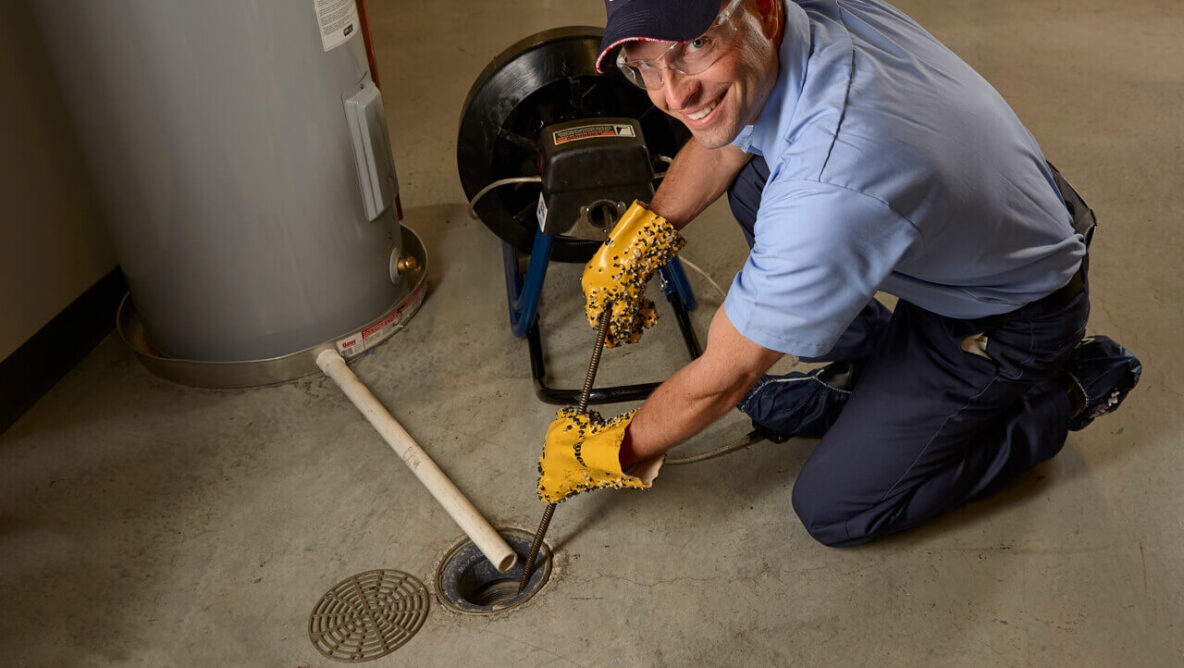You probably notice floor drains most often in public restrooms but floor drains are also found in commercial kitchens, garages, on patios and driveways, in basements, warehouses and even some residential bathrooms and laundry rooms. The humble floor drain captures overflow from sinks, toilets, tubs, rain, etc. then directs it safely to a sewer or municipal storm drain so that the floor stays dry and rooms don’t flood.
If you have floor drains in your home or business and you smell foul odors coming from them, it’s because the traps have dried out. You see, floor drains have one of those U-shaped P-trap pipes just like your bathroom sink drain. That U-shaped pipe is designed to hold water, which stands in the pipe and prevents sewer gases from coming up through the drain. If you smell sewer gas, grab a bucket of water and start pouring it into the floor drain. Go ahead a dump a gallon or two or preferably a whole five gallon bucket of water into the drain. This will not only seal off sewer gases, it will also let you see if the drain is working properly. If it’s clogged it won’t be able to do its job when called upon.
Floor drains can become clogged just like any other drain. In fact, they become clogged more often
than many types of drains because they’re on the floor where dirt and debris collect. That debris often finds its way inside the drain. In fact, lots of people sweep their floors and sweep the dirt right into the floor drain. Please don’t do that!
So, if sewer gas is a problem and your floor drains don’t get much water flowing into them, be sure to refill the traps about once a month. And at least twice a year, you should really give that drain a workout. If it appears to be clogged or slow, take steps to remove the clog. Use a crank snake and see if you can reach the clog. But because floor drains are often connected by long pipes, the hand auger may not reach all the way through the pipe. It’s a good idea to call a sewer and drain cleaning company like Roto-Rooter to clean it out professionally.


